Philip Bell Downing: Black Creativity





The need to exercise the right to vote was and still is a long battle that has cost precious lives at every turn throughout the struggles. Personally, I get it with those who don’t see the need to go and vote, howev er I came to the realization that when I and other for merly incarcerated persons refuse to utilize the power of the ballot, we basically surrender our rights, which then allows the powers that be to dictate the terms of our existence without hear ing our voices.
If we don’t voice our wishes through exercising our right to vote, then how can we complain? Granted, too often our choices aren’t the winners. Nonetheless, by voting, it is made clear that we’re paying attention and our votes will count at some point.
Between the time of the publishing of this column and Election Day on Nov. 8, The Formerly Incarcerated Giving Back organization will be out in full force reg istering people to vote, be cause we do recognize the need for everyone to have a say in matters that concern our very lives.
It can become quite dis couraging to watch all the national moves that are be ing made and the games that are being played to suppress
Congresswoman Barbara Lee cited the Public Law 116330 which states that the Circu lating Collectible Coin Rede sign Act of 2020, the American Women Quarters Program, which features coins with re verse (tails) designs emblem atic of the accomplishments and contributions of prominent American women should cel ebrated for its diversity.
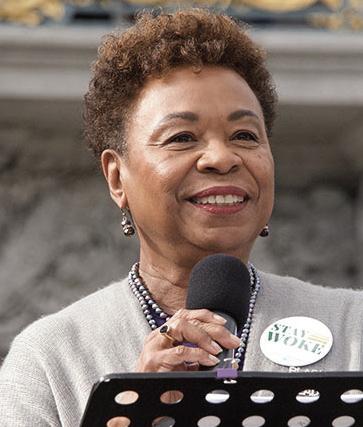
Congresswoman Lee, who also serves as Co-Chair of the
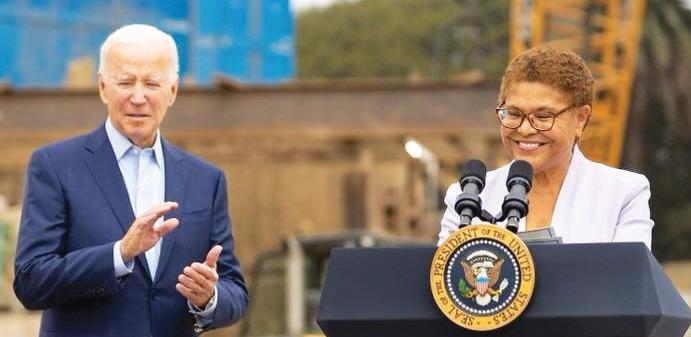
Congressional Asian Pacific American Caucus Health Task Force, said, “This program recognizes brave, courageous women throughout our history on the American quarter. From Dr. Maya Angelou to Dr. Sally Ride to Anna May Wong, the Amerigram recognizes brave, courageous women through out our history on the Ameri can quarter. From Dr. Maya Angelou to Dr. Sally Ride to
Anna May Wong, the Ameri can Women Quarters Program ensures that current and future generations appreciate the ways in which women have contributed to a country that is more diverse, representa tive, and strong. With input of the public, I am delighted that we are finally honoring these phenomenal women, espe cially women of color, in such a beautiful way.”
The Oakland Police Depart ment (OPD) is investigating a felony vehicle stop that oc curred on Oct. 17, 2022, at 5 p.m., in the 1400 block of 27th Avenue. Officers in the area observed three individuals en tering a parked vehicle, two of which appeared to have fire arms.
For the past 10 years, the Alameda County District At torney’s office has made hu man trafficking a top priority. In December 2021, however, they acknowledged that de spite all of their efforts, Alam eda County remains the thirdhighest “hot spot” for human trafficking in the United States.
In 2013, a DOJ report found that 55% of the trafficking victims in Alameda County were from foster youth group homes. Sixty-one percent (61%) of all victims of sex traf ficking are African American, followed by 15% Latinx and 12% Caucasian. A 2019 report found that labor trafficking
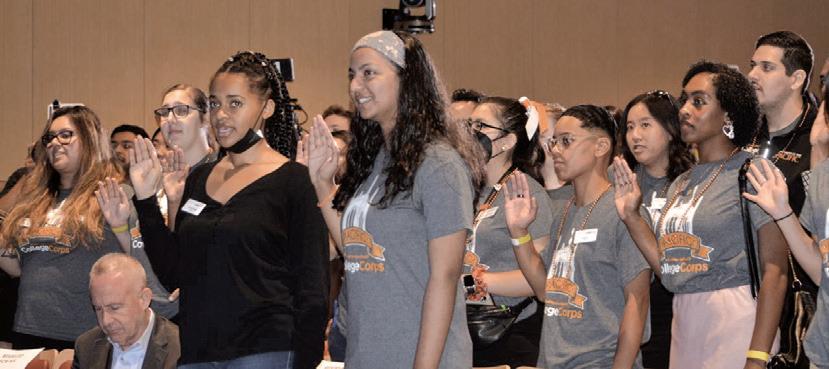
was even more prevalent than sex trafficking among home less youth in Oakland.
In March 2021, the ACLU and Urban Peace Movement reported that our District At torney’s office prosecutes sex workers and imposes harsh probation conditions. Survi vors often report that they are made to feel like criminals in stead of victims. My opponent has repeatedly called sex traf ficking victims “prostitutes.”

Advocates know that labeling a trafficked child or youth as a “prostitute” suggests an ele ment of choice – there is no
Wil Ussery celebrated his 94th birthday with his wife at Geoffrey’s Inner Circle Sunday evening Jazz performance to see singer Rhonda Benin. Mr. Ussery had told his wife that he would love to hear the sounds of Ms. Benin for his birthday. In a surprising coincidental surrendipitous birth day gift Ms. Benin appeared and saluted Ussery who says he hopes she performs again someday to initiate his entrance into the Century Club at 100 years of age.
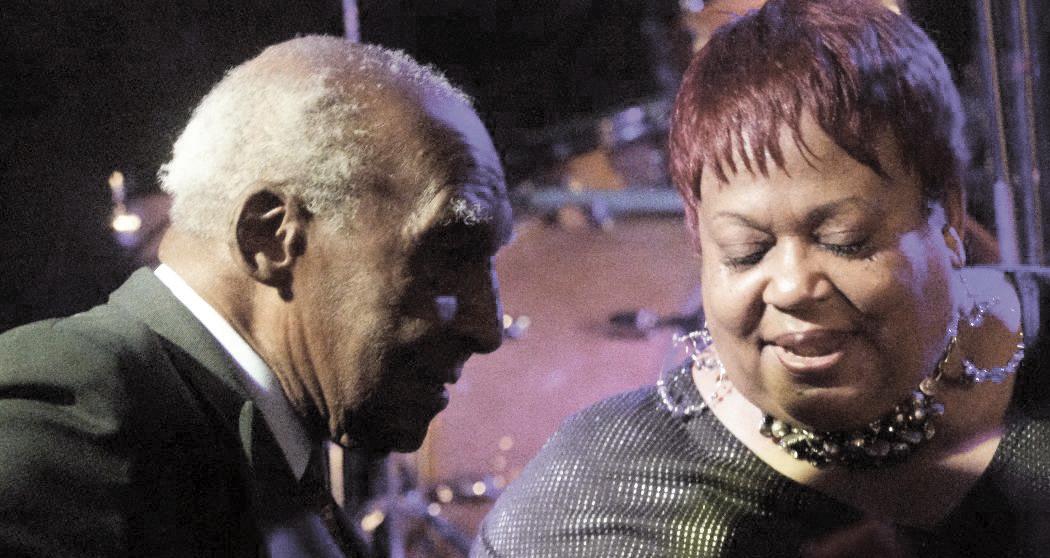
Before the vehicle drove away, officers conducted a ve hicle stop. Upon contact, one of the individuals inside of the vehicle fled on foot. Officers quickly established a perim eter, ultimately locating the individual and recovering a loaded firearm with an extend ed magazine.

The remaining two individ uals inside of the vehicle were safely detained. During the search of the vehicle, two ad ditional firearms with extended magazines were located. Both firearms were loaded, one of which contained a device al lowing the firearm to fire mul tiple rounds with a single pull of the trigger.

Continued on Page 12
Six grassroots candidates are running for the three seats that are up for election in No vember on the seven-member board, Districts 2, 4 and 6. None of the incumbents, who all backed last Spring’s school closures, are running for re election.

These six candidates, two in each race, self-identify as progressives opposed to school closures and privatization of school resources. They see themselves as allied and as a voice for the community move ment against school closures.
Most of these candidates are backing each other in a ranked choice slate, asking voters to support their progressive oppo nents as a second-place choice
but not to vote in favor of any of the candidates who are aligned with privatizers and charter schools.
In the wake of a community uprising against school clos ings earlier this year, propo nents of continued school clo sures are on the defensive. The
candidates they support down play or criticize last school years’ school closings and tone down their ties to charter schools and the corporate edu cation industry.
The six progressive candi dates:
District 2
Maximo Orozco is an OUSD parent and construction worker who became active in the fight against school clo sures this year. He has children who have attended La Escuel ita.
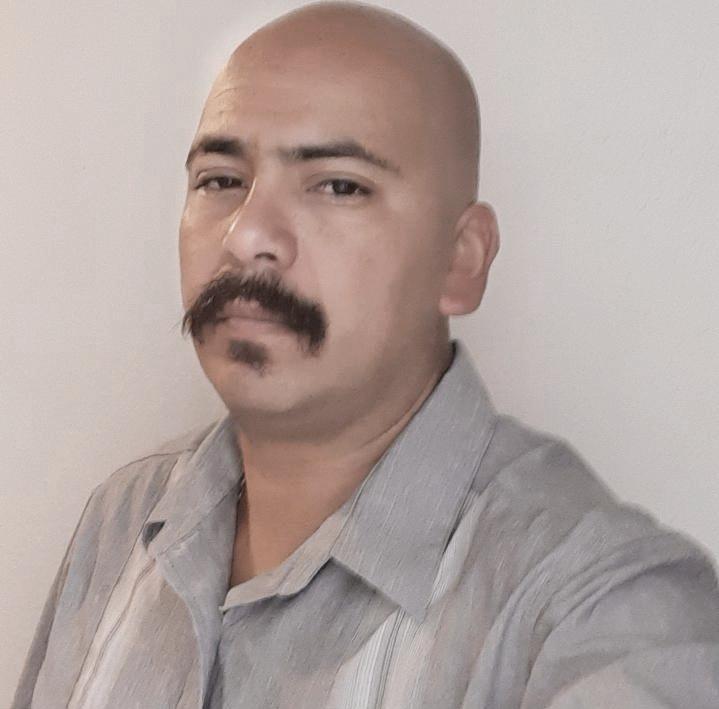
Orozco has been an out spoken opponent of closing schools. He recently went to Los Angeles to protest Oak land’s state overseers at the Fiscal Crisis and Management Assistance Team (FCMAT).
Jennifer Brouhard is a re tired teacher who worked for OUSD for 27 years. For the past several years, she worked at La Escuelita, which had its middle school (7th and 8th grades) closed at the end of last school year. Brouhard’s priori
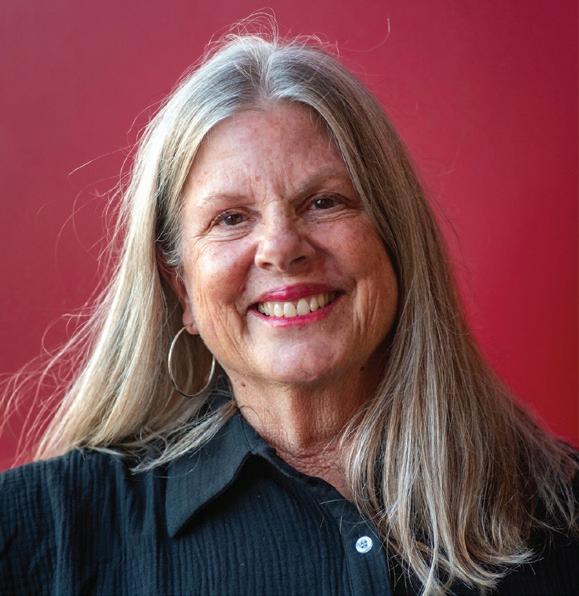
The same playgrounds I grew up on in Oakland aren’t safe for my kids today. The Town deserves better, and it starts with a detailed, multipronged, comprehensive ap proach to public safety.
As the only Black man on Oakland’s City Council, I know firsthand that public safety is an intersectional is sue. It requires a focus on the history of Oakland, racism in America, the flaws of our criminal justice system, lack of investment in new technol ogies, and yes, adequately re sourcing our law enforcement and violence prevention teams with well-trained and commu nity-minded men and women.

For too long in Oakland, saying that we should re source police officers has been a “third rail” issue that ambi tious politicians avoid. This kind of politics has gotten us nowhere, and Oaklanders are rightly sick of it.

Oakland is in the midst of a public safety crisis. In 2021, 134 people were killed in our city and we are on track to meet or surpass that number this year. Families in my City Council district account for an outsized percentage of those affected by these tragic kill ings. They are mourning loved ones and trying to pick up the
Loren Taylorpieces, and in the meantime, our police officers simply can not keep up.
A recent investigative report showed that over the course of 11 months last year there were 115 instances in which Oakland police were so over whelmed with 911 calls that they had to prioritize on the fly, sending officers only to emer gencies that seemed to present imminent danger.
It is absolutely crucial that as we try to solve the root causes of crime and homicide in our city, we fix the resource gaps and staffing shortages that are adding to the chaos. We are failing if our first responders are having to decide who lives and who dies.
I reject the framing that it’s either police and enforcement
President Joe Biden recently
announced major federal action on marijuana reform, declaring that he was initiating pardons for all federal convictions for simple possession of marijuana and urging governors to do the same at the state level. He also announced that his administra tion would review how mari juana is classified under federal law.

Currently, marijuana is con sidered a Schedule 1 drug, grouping it in the same category as heroin and Ecstasy. A review could result in the drug being
Pres. Joe Biden. WhiteHouse. gov photo.
rescheduled to a lesser category or de-scheduled entirely, the latter of which would likely al low states to legalize marijuana without conflicting with federal

law.
The pardons, once finalized, would erase records for every one convicted of simple posses sion at the federal level since it was banned in the 1970s. This would include around 6,500 people convicted between 1992 – the earliest year for which the federal government provided data, according to the New York Times — as well as thousands more in Wash., D.C., which op erates under federal drug laws.
There are no people currently serving sentences in federal prison for simple possession, the administration said, but the pardons will eliminate a major hurdle for many formerly incar cerated individuals in finding employment and housing and accessing education and other government aid.
“Sending people to prison for possessing marijuana has upended too many lives and in carcerated people for conduct that many states no longer pro hibit,” Biden said in a written statement. “Criminal records for marijuana possession have also imposed needless barriers to employment, housing, and educational opportunities.”
He continued: “It’s time that we right these wrongs.”

The actions mark an evolu tion for Biden on drug policy. Numerous policies that Biden advocated during his time as a senator, including the infamous
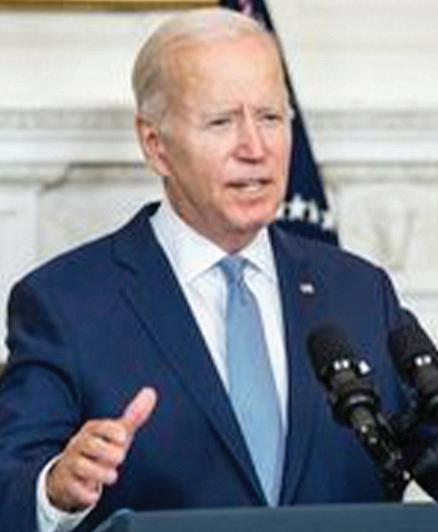
Continued on page 6
 By Tamara Shiloh
By Tamara Shiloh
During the ear ly 19th century, pieces of mail and packages could only be posted at the town’s post office. For many, this meant traveling long distances and delays due to inclement weather.
A more convenient solu tion was presented in October 1891, when Philip Downing’s (1857–1934) patent for the Street Letter Box made it pos sible for residents to leave their mail inside a tall metal box for the postman to pick up and take to their home post office.
The letter box was con structed of metal, had four legs and a self-closing hinge door that kept mail safe from the elements and potential thefts. That same year (1891), Down ing received another patent for a design with a chute that would unload mail into a postal worker’s bag.
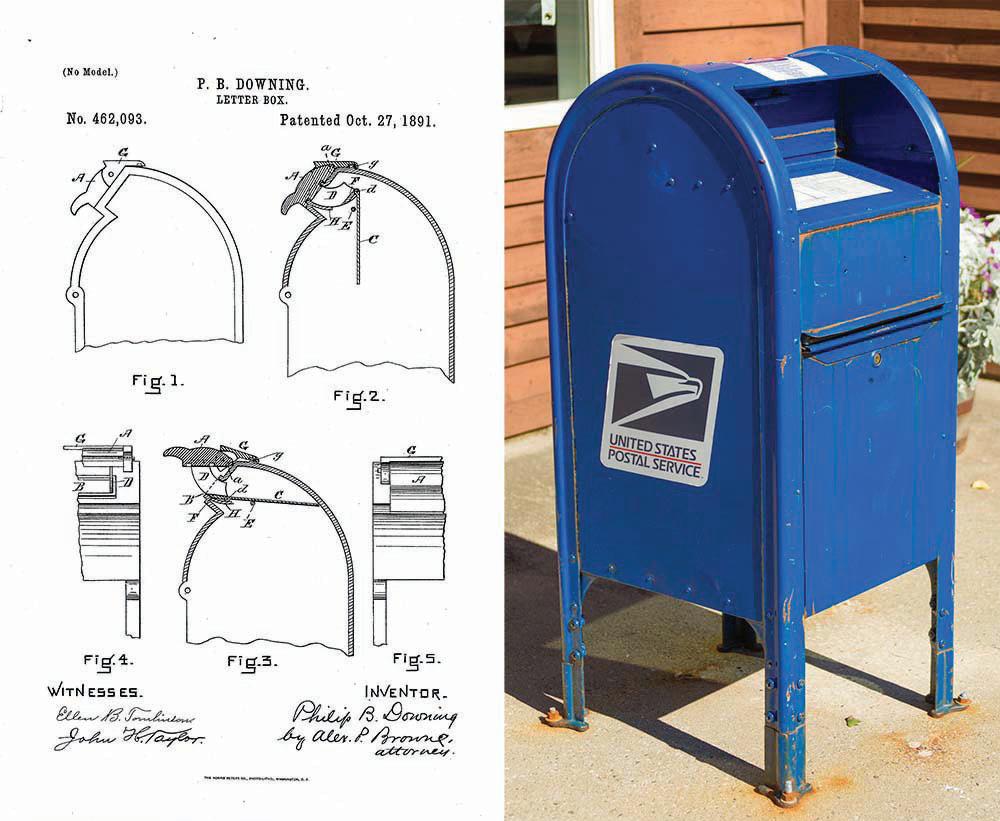
The Providence, R.I.-born Downing was creative from childhood, always looking for ways to improve on the rou tines of daily life. As the son of abolitionist George T. Down ing, also manager of the U.S. House of Representatives’ dining room in Wash., D.C., and entrepreneur Serena L. de Grasse, young Philip was ex posed to influential leaders all of his life. In fact, in the mid1830s, his grandfather Thomas
Philip B. Downing Letter Box patent and photo of USPS box. Public domain patent and Public domain photo by Petr Kratochvil.
Downing was a key player in the United Anti-Slavery Soci ety of the City of New York. Later, Phillip would always be at his side, watching and learn ing.
Downing’s idea for the let ter box came about because his family relocated often. In what seemed to have been every city, they too had to travel far to post mail. Like all great inven tors, he saw a gap in progress, became creative and filled it.
Downing’s letter box (known today as a mailbox) has since gone through several improvements. During the ear ly 20th century, the U.S. Postal Service approved the design of a locking curbside mailbox. Also introduced were specifi cations for installing curbside mailboxes that included plac ing the letter box 6-8 inches back from the curb.
Still, many features stem ming from Downing’s inven tion have remained intact.
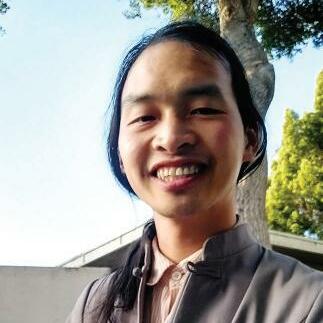
Although best known for the letter box, Downing received patents for other inventions. His first, the “New and Useful









Improvements in Street Rail way Switches” (June 1890), was for an improvement in streetcar and train switches that allowed the switch to be opened or closed by the brake man from the platform of the car. This patent ultimately led to the light switch. Later, in January 1917, he would, using a roller and an attached water tank, create and receive a pat ent for an envelope moistener.
During the late 19th and early 20th centuries, Downing successfully filed at least five patents with the U.S. Patent Office. None, however, were more widely used than the let ter box.
After a long career as a post al clerk, he died in Boston in 1934. He was 77. Perhaps one day his face will appear on a postage stamp.

Read with the young ones about items used in our ev eryday lives, including the mailbox, created by African American men and women in Charron Monaye’s “Imagine Life Without African-Ameri can Inventors.”

That’s why the team at Cityside Journalism Initiative created The Oaklandside. Launched with support from Google, The Oaklandside grew out of a mission to inform and give voice to underserved Oakland residents.


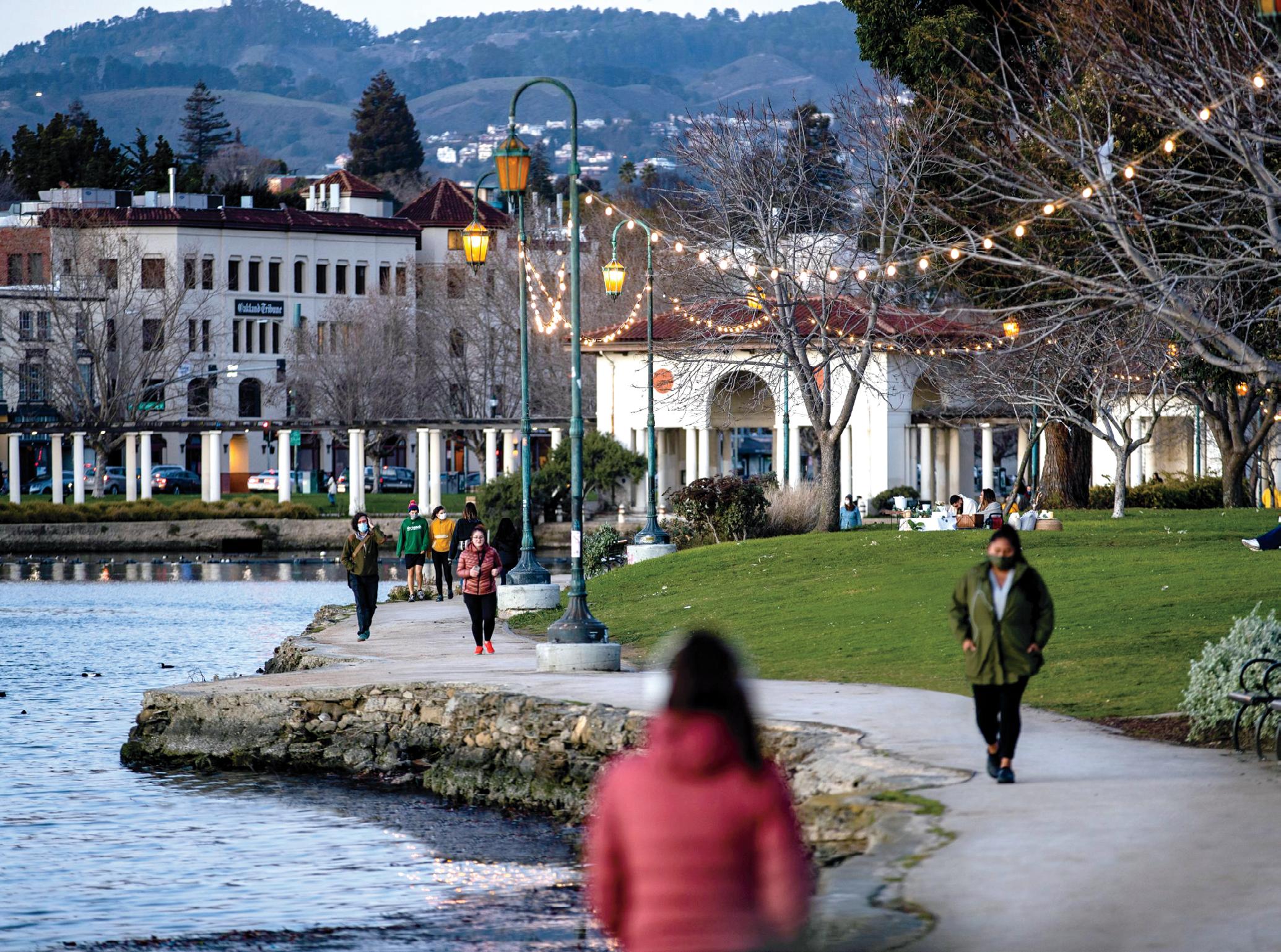
Through deep audience engagement, The Oaklandside helped readers navigate the pandemic, proving the value of local news that’s for — not just about — its community.
Learn more about how Google supports local news g.co/supportingnews/local

Oakland residents needed more community-centered coverage
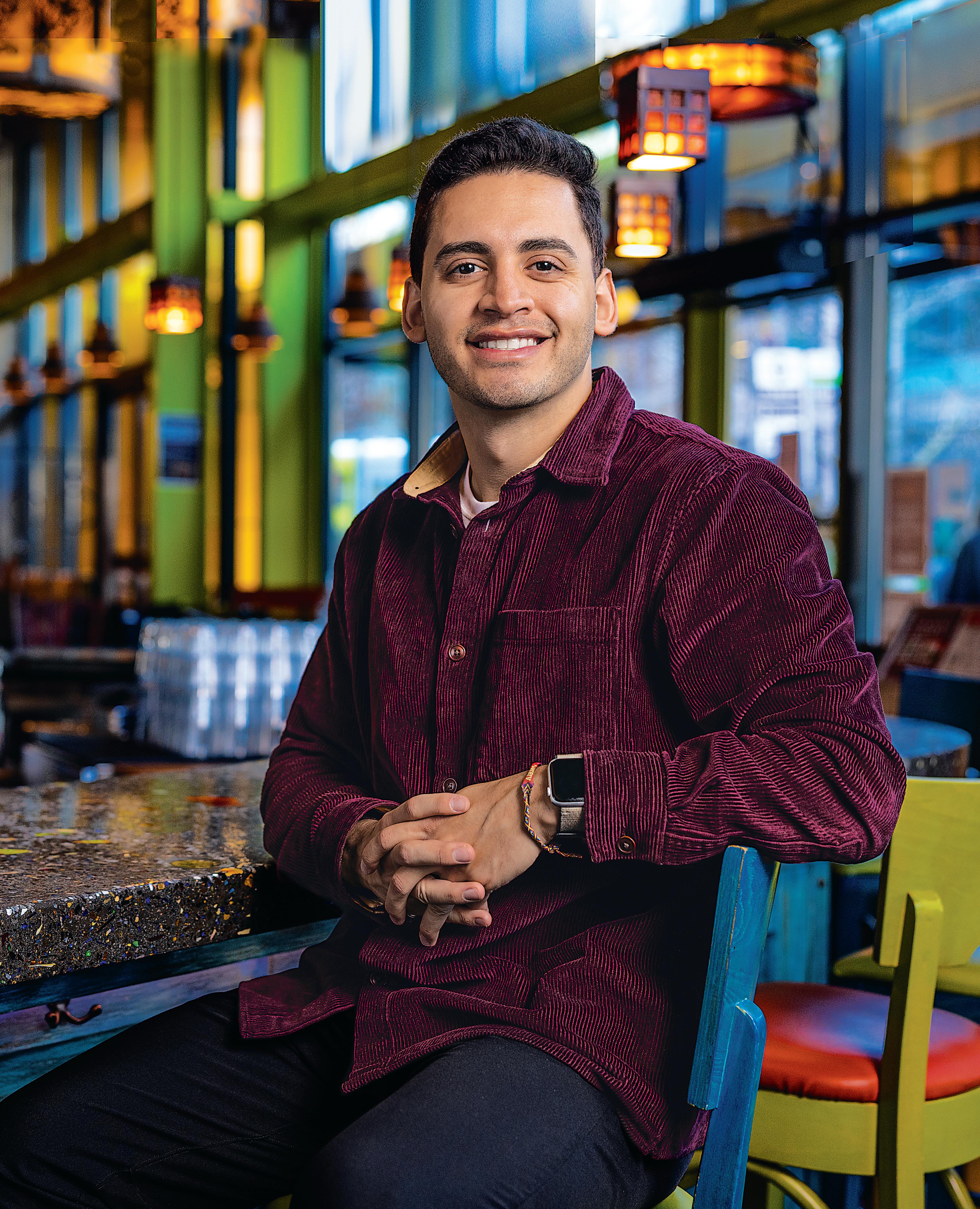

State officials have an nounced eligibility for the updated Moderna COVID-19 booster and the Pfizer-BioN Tech booster has been expand ed.

Now children ages 6 and older who have received their initial series of vaccinations can receive the updated Mod erna bivalent booster. Children ages 5 and older are approved to receive the Pfizer-BioNTech bivalent booster two months after their most recent injec tion.

According to the Centers for Disease Control and Preven tion (CDC), these reformu lated, single dose boosters are referred to as “bivalent” be cause they are meant to defend against both the original virus that caused COVID-19 and the BA.4 and BA.5 Omicron sub variants which currently make up about 80% of the cases in the United States.
California Health and Hu man Services Agency Sec retary Dr. Mark Ghaly, and

Director of the California De partment of Public Health and State Public Health Officer Dr. Tomás J. Aragón made this an nouncement on Thursday Oct. 13 as experts are predicting that there will be an uptick in COVID-19 cases during the upcoming holiday season.
The decision to approve the use of bivalent boosters is in line with recommendations the CDC has made to the public and it is supported by the West ern States Scientific Safety Re view Workgroup.
“Given the anticipated bur den of COVID-19 infections and related illnesses this fall/ winter season, the Workgroup believes that the benefits of bi valent booster doses that more closely match currently circu lating SARS-CoV-2 variants will sustain protection against COVID-19-related hospital izations and deaths in young children and substantially outweigh any potential risks,” Western States Scientific Safe ty Review Workgroup Chair Arthur Reingold, MD, said in a statement addressed to the governors of California, Ne
vada, Oregon and Washington.
Medical experts warn that cooler weather will bring a surge of COVID-19 cases while cases of the flu could make a return this fall and win ter. Doctors are promoting flu shots to keep hospital admis sions down as health systems grapple with surging COVID cases.
According to the CDC and official California state es timates, the national 14-day average for COVID-19 hospi talizations is currently 6,496 while the state average is about 1,818.
According to the state, the number of COVID-19 deaths averaged about 19 per day.
About 72.3% of Califor nians have received the prima ry series of vaccinations. And 58.6% of the state’s population has received the primary series and the booster. Only 37.5% of children 5-11 have received the primary series of vaccinations.
Eligible Californians can speak with their doctor, visit MyTurn.ca.gov or call 833422-4255 for more information to make a vaccine or booster

Black Women Organized for Political Action PAC (BWO PA-PAC), California Black Women’s Collective PAC and Black women leaders through out the state are calling out Gov. Gavin Newsom for not endorsing Congressmember Karen Bass (D-CA-37) for Los Angeles Mayor.
The individuals and organi zations said in a letter that they had “watched Governor New som issue his support to local and statewide candidates for this upcoming November gen eral election,” but he has not indicated he would be support ing Bass.
“Black Women went all in to support Governor Newsom during the recall with Con gressmember Bass leading the way. We showed up and came out while other groups stayed home. We also led the charge to pull together our allies that rallied counterparts through out California for Women Against the Recall. And yet...
we haven’t seen much change in his actions,” the Oct. 16 let ter stated.
In August 2021, Bass, mem bers of the group calling itself Women Against the Recall (WAR), and Congresswoman Barbara Lee (D-CA-37) held a news conference to openly support Newsom in the recall election held Sept. 14, 2021.
Newsom survived the po litical action and many Black women in the state are asking him to acknowledge their as sistance.
“He stated that he supports Black women, but his admin
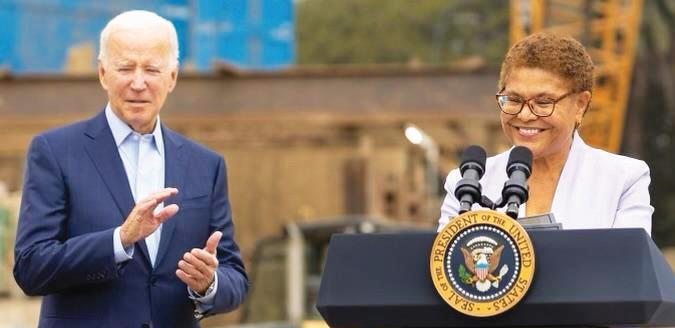
istration doesn’t demonstrate that he wants us at his deci sion-making table. He selec tively supports Black women candidates even when they have overwhelming support from the party leaders and our community like in the case of Congressmember Bass,” the coalition stated.
Gov. Newsom has not en dorsed any candidate running for mayor of Los Angeles in the November election, but he recently lent support to a Dem ocrat running for State Senator.
“NAACP strongly opposes
lead to
expansion of mobile and
gambling –leadingto more addiction and pr oblem gambling, particularl y among youth and communities of color.”
Rick L. Callender,ESQ. CA/HI
President
As mayor, Ignacio De La Fuente will put Oakland back on track by getting back to basics. He will tell us the hard truths and face up to our problems, because only then can he begin to make the tough decisions and fix what’s wrong in Oakland.
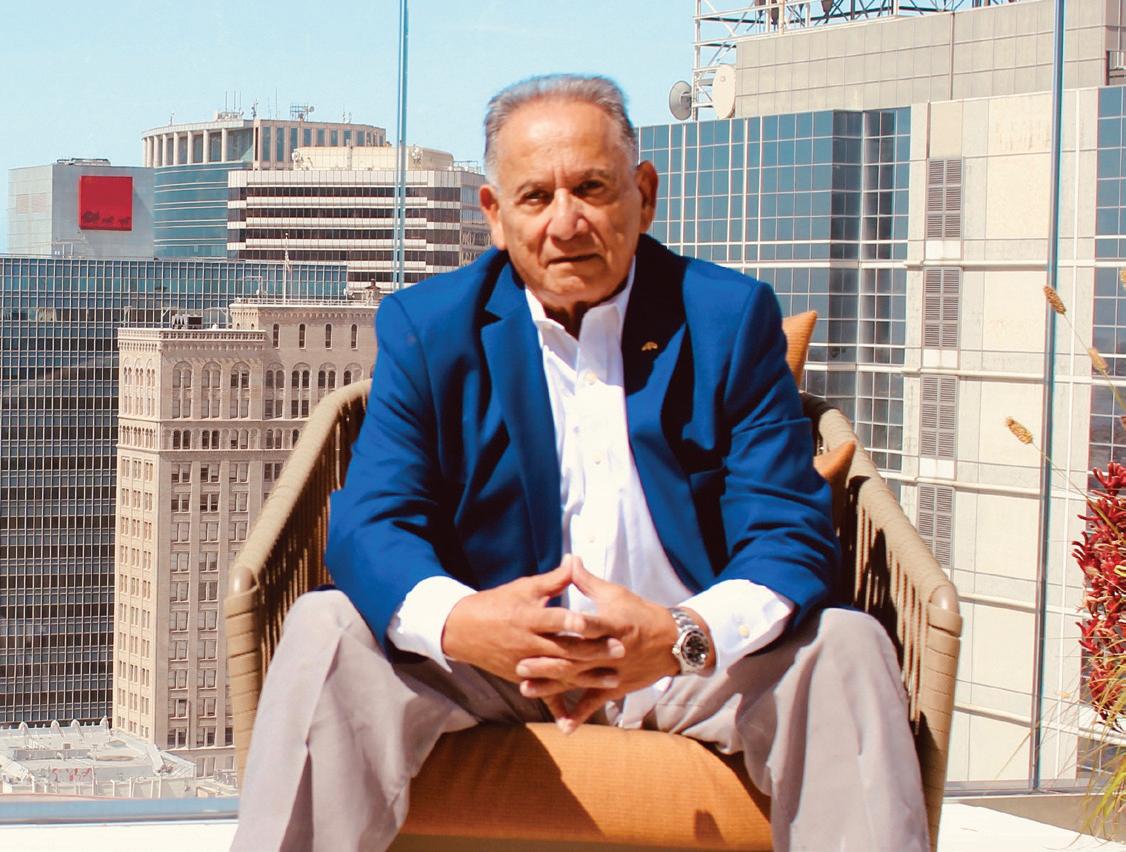
Ignacio will work to build consensus to create common sense programs that will:
➤ Alleviate homelessness by expanding affordable housing, coordinating with the County to provide effective services, including mental health and drug treatment care, and cleaning up and reducing encampments.
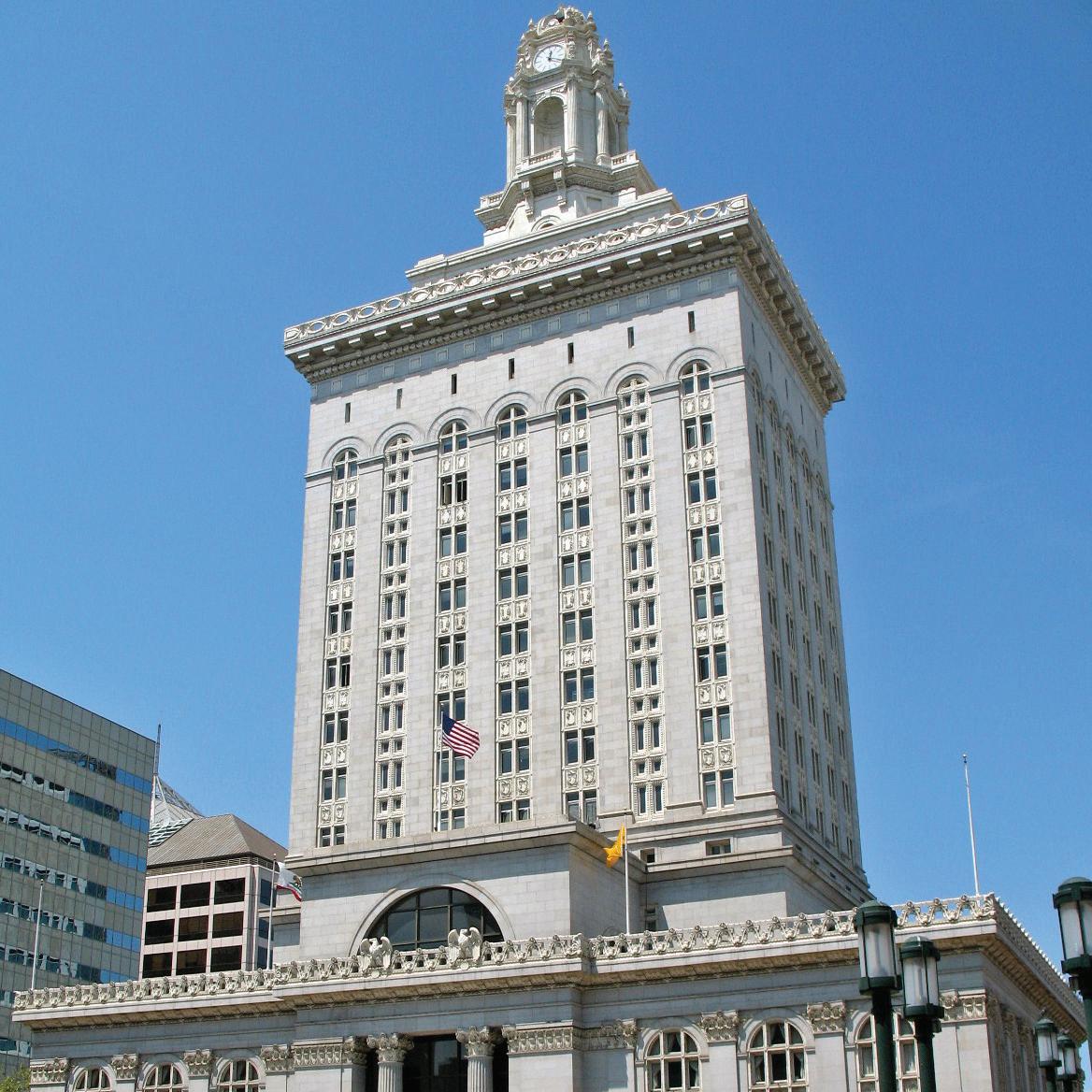

➤ Make our streets safe again by hiring more police who reflect Oakland’s diversity and make sure they have the resources they need to protect residents and businesses.
➤ Deliver high quality city services from fixing roads to improving parks and recreational centers, and revitalizing neighborhoods.


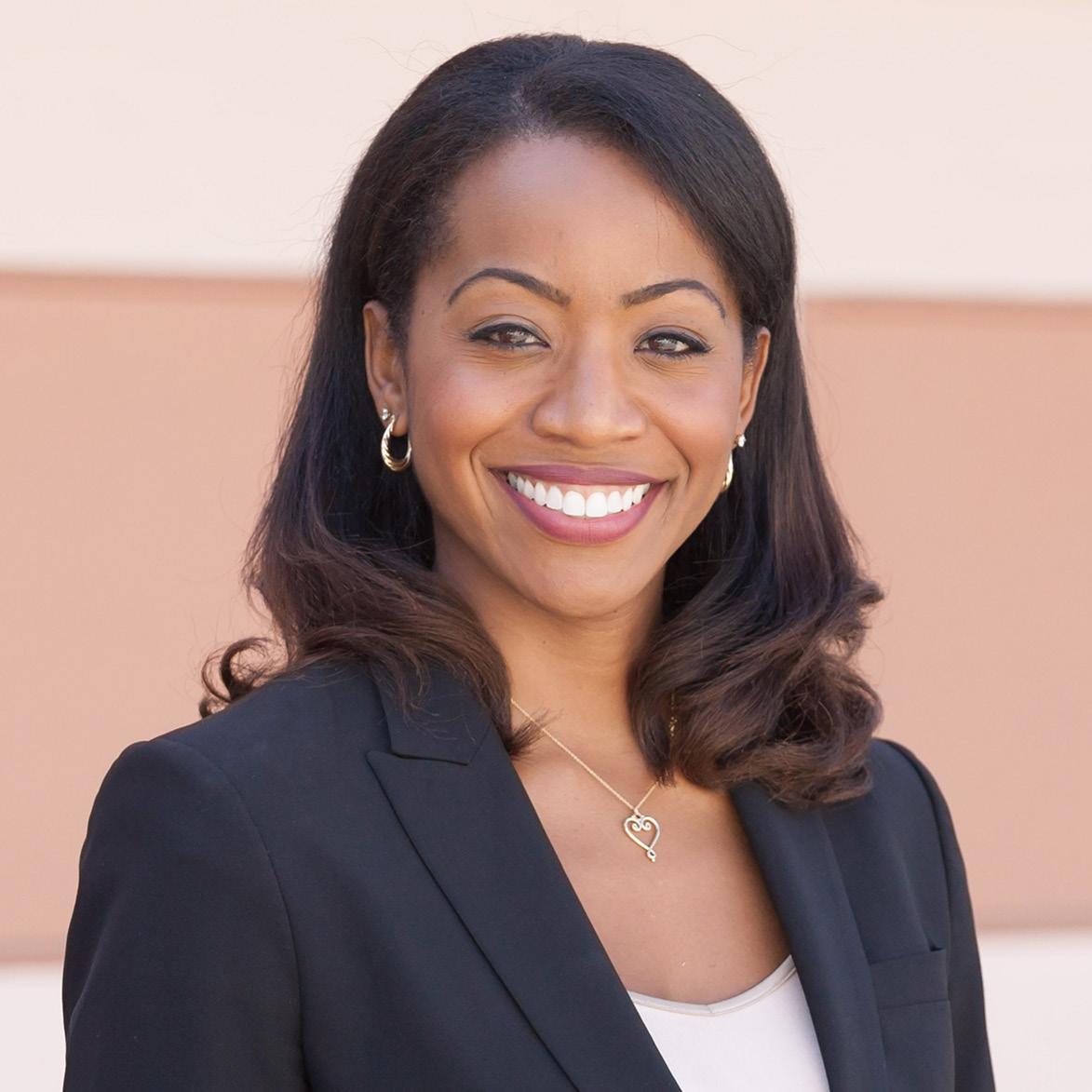
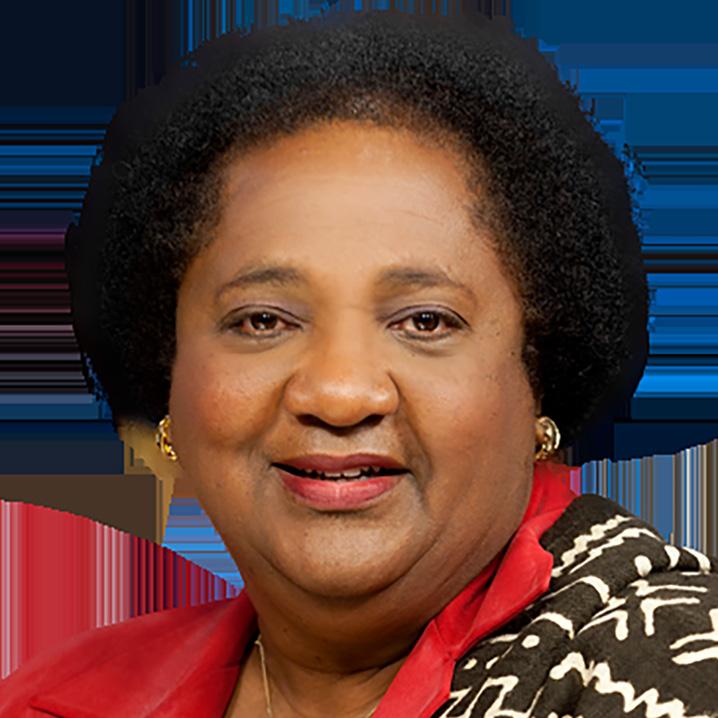
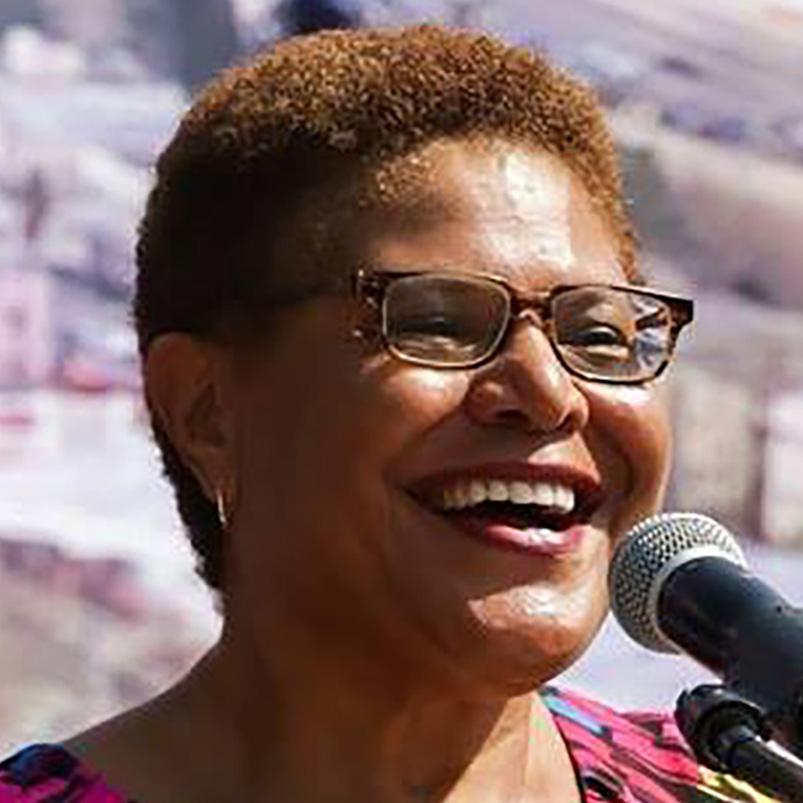
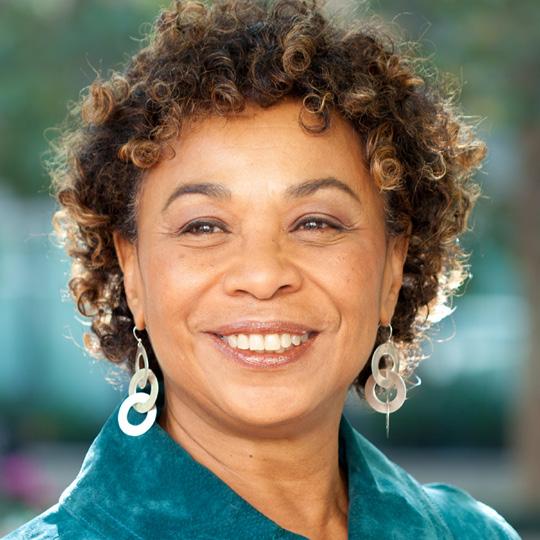

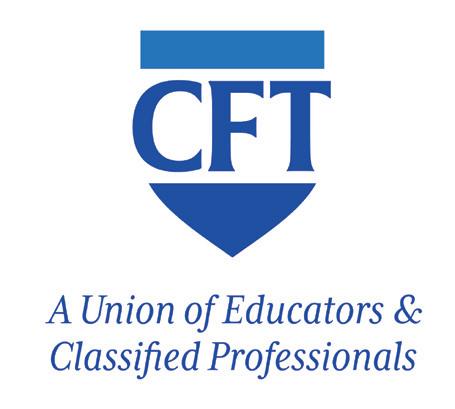


choice in sex trafficking.
Oakland City Council Presi dent Nikki Fortunato Bas en dorsed my campaign because of our plans to address human trafficking. Bas stated, “It is critical, not only for Oakland residents, but for all of Alam eda County to have a DA who understands how to work with victims and has a history of protecting vulnerable women and youth. Pamela is the only candidate who has that history and the only candidate I trust to make innovative changes in how victims are supported and perpetrators are successfully prosecuted.”
As the next Alameda County District Attorney, my adminis tration will implement the fol lowing solutions:
1) Treat survivors and their
families with compassion and dignity.
2) Create a new court de signed for survivors with repeat sex work offenses, or offenses arising out of active engage ment in the sex trade, modeled after the Project Dawn Court in Philadelphia where 70% of participants successfully grad uate from the program. Focus on creating opportunities to di vert survivors from the crimi nal justice system and to build a new life.
3) Expand services for sexu ally exploited youth and adults with trained staff to respond to the dangers they face, assis tance in creating a safety plan as well as transition and longterm plans.
4) Partner with other county departments, state agencies and community organizations
to provide housing, awareness campaigns and expand the fo cus of human trafficking part nerships with communities of ten unserved.
5) Expand services for and outreach to male victims, in cluding gay young men and transgender youth, and build bridges through education, awareness and support.
6) Work with the Alameda County Board of Education, lo cal school districts, youth-led organizations and other County agencies to prevent access to vulnerable youth, with renewed emphasis on best practices and strategies to reduce the number of trafficked youth.
7) Partner with nationally recognized law firms to attack the problem by holding corpo rations that facilitate trafficking in our community accountable
for their part in fostering oppor tunities for traffickers using the Trafficking Victims Protection Reauthorization Act (TVPRA) and other civil remedies.
Civil rights attorney Pamela Price is a nationally recognized advocate for women’s rights and gender equity. She has re ceived the endorsements of Planned Parenthood Advocates Mar Monte, FundHer, Cali fornia Black Women’s Demo cratic Club, Black Women Organized for Political Action (BWOPA) and many others. When she is elected to serve as Alameda County District At torney, she commits to respond to the crisis of human traffick ing in Alameda County with compassion and in partnership with local officials, including Oakland City Council Presi dent Nikki Fortunato Bas.
ties include working to ensure “funding goes to schools and isn’t misspent at the central of fice.” She also pledges to join others to “stop school closures and rescind the closures from last Spring.”
Pecolia Hudson-Manigo is an OUSD parent and executive director of Bay Area PLAN, an Oakland-based parent advoca cy group. She was a leader in the campaign for Reparations for Black Students and is en dorsed by the Oakland Educa tion Association.
Mike Hutchinson currently serves the school board as the District 5 representative and has a reputation as a strong opponent of school closings. Though he has two years left to serve on the board, he is run ning for the District 4 seat be cause his address was moved from District 5 to District 4 as
part of the recent redistricting process.
District 6
Valarie Bachelor is an orga nizer for the California Federa tion of Teachers, a labor union that represents education, school support staff and com munity college employees.
She has worked in labor orga nizing for 15 years. She told the Post, “Our students have been penalized under state control for 20 years. It’s time we get back full local control.”
She strongly opposes closing schools: “I will always stand with Oakland students, fami lies, educators and community in the fight for Oakland kids,” she said.
Joel Velasquez is an OUSD parent who has long worked to stop school closings. He was a major leader in the occupa tion of Lakeview Elementary, a school on Grand Avenue that was closed 10 years ago.
Velasquez told the Post that rescinding school closures is one of his top priorities. Asked what he would do if the state steps in to demand school clo sures, he said it would be a per fect opportunity for the whole Oakland community to stand together and ask, “Is this really a democratic system with an autonomous board elected by our community?”
Three candidates, one in each race, are opposed by the teachers’ union and progressive groups because of their ties to corporate privatizers or have a history of backing closing schools. They are supported by former school board mem bers who were responsible for voting to close neighborhood schools earlier this year.
District 6 candidate Kyra Mungia, a former Oakland teacher, currently serves as Mayor Libby Schaaf’s deputy director of education. Mungia
Continued from page 1
or violence prevention and root causes intervention. It has long been my stance that it has to be “both-and” and not “either-or.”
I also categorically reject the idea that we have to choose between racial justice and public safety, or that it is not “progressive” to enforce our laws. There’s nothing progres sive about doing nothing when Oaklanders are dying from gun violence, having their cars bro ken into, or feel unsafe on our streets on a daily basis.
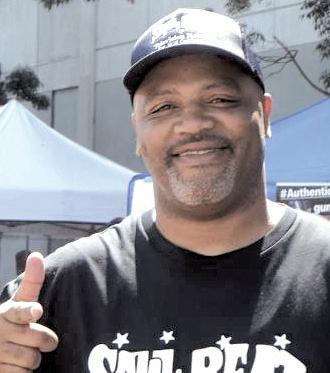
After the murder of George Floyd, I architected and co-led
Oakland’s Reimagining Pub lic Safety Task Force to de velop innovative and equitable solutions to our public safety challenges, many of which we adopted in the current city budget. But that was just the beginning.
In my campaign for mayor, I’ve proposed a comprehen sive public safety plan that will address the crisis we find ourselves in. I am not afraid to introduce tough, potentially controversial, systemic re forms and investments to keep Oakland safe. If elected mayor in November, this will be my
All three individuals were arrested for firearm related offens es, and one had an outstanding robbery warrant.
To date, OPD has recovered nearly 1,220 firearms, which is more than the department recovered in all of 2021.
Visit Nixle.com to receive Oakland Police Department alerts, advisories, and community messages, or follow OPD on Twitter, Facebook, and Instagram @oaklandpoliceca.
top priority.
Some of my proposed re forms will require City Coun cil action, but during my first month in office, I will take ex ecutive actions where possible to make Oakland safer. Here are a few of those:
• As we wait for new officers to emerge from police acad emies, I will immediately in crease our sworn officer capac ity through partnerships with other law enforcement agen cies, ensuring that officers with community-facing roles (e.g., traffic enforcement) adhere to OPD commitments to constitu tional policing.
• I will deploy tools that aug ment surveillance monitoring and investigation capacity, in cluding high-definition cam eras, automated license plate readers, drone technology, and a criminal investigations data
To read the full story, go to postnewsgroup.com
Several
Soul Beat TV Network is presenting an Election Day Town Hall from 6 p.m. to 9 p.m., Tuesday, Oct. 25, 2022, for all mayoral, City Council and Oakland School Board candidates to discuss their plans to tackle Oakland’s ed ucation, employment, crime, and homelessness issues. It will be held at Dezi’s, which is located at 1759 Broadway.

The moderator is Stanley “Mistah Fab” Cox, a local entertainment artist and busi nessman.

The Town Hall will field questions from the commu nity via social media. Please send all inquiries to Town Hall@SoulBeatNetwork. com.
was appointed in June to the board to fill the remaining months of the term of District 6 Boardmember Shanthi Gon zales. Mungia is backed by leaders of several local charter schools and by Mayor Schaaf, an outspoken backer of char ter schools and advocate for closing neighborhood flatland schools. Mungia has received donations from 12 funders of the pro-charter organization GO Public Schools.
District 4 candidate Nick Resnick is a parent, former OUSD teacher and currently chief executive officer of In quiry by Design, a company that produces curriculum. He has backing from 13 charter school leaders and a Political Action Committee funded by pro-charter billionaire Michael Bloomberg.
District 2 candidate David Kakishiba is executive direc tor of EBAYC, a nonprofit that runs after-school programs, summer camps and provides mentoring for Oakland stu dents. He says he opposes closing schools. However, he previously served on the school board from 2003 to 2015 where he voted to close schools and open charter schools. For example, in 2011, Kakishiba voted to close eight schools: Far West, Youth Em powerment School, Barack Obama Academy, Lakeview, Lazear, Marshall, Maxwell Park and Santa Fe.
Post staff contributed to this story.
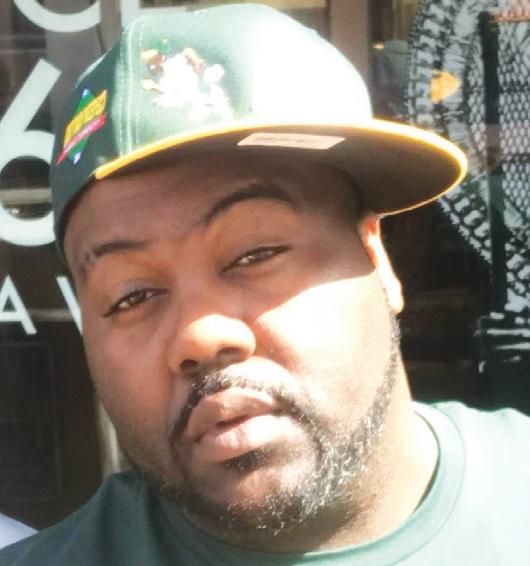
“Chuck” Johnson said, “Soul Beat TV was and still is the melting pot for Oakland ever since it first aired in 1978. And now we are relaunch ing to reinvigorate the com munity with inspiration and
excitement.”
For more information, visit www.soulbeatnetwork. com or info@SoulBeatNet work.com.

Phyllis
tributes. Please contact Maxine Ussery at 510 287-8200.
on Nov. 12.
the votes of minorities and to scare the re-entry populations from going to the polls.
Continued from page 1 who appear to be mentally challenged who are forced to get by without the help need ed, look at the children being bounced around due to unreg ulated school policies — not to mention those of us living from paycheck to paycheck.
This can be quite discour aging, especially when we have very little hope, faith and trust in the process from the start. But we can’t be deterred and surrender to the forces that be; instead, we must marshal the tools that are at our dispos al in hopes of making changes toward our interests.
Thanks to Gay and Paul Cobb, the owners of the Post News Group (who once marched with Rev. Dr. Mar tin Luther King Jr. to rein state our constitutional vot ing rights that led to the 1965 Voting Rights Bill signed by President Lyndon Johnson), I am able to use this media to remind us that we are living in such terrible times and that our choices are crucial to our very existence in every man ner conceivable.
I ask all of you to take a look at the violence that hap pens routinely, look at the homelessness, look at those
When you count up the costs of cleaning up and ad dressing the miseries you see around us, you will agree that a stand must be taken, and it starts at the polls. Voting al lows us to put in office those who we deem as truly qualified to address the most pressing is sues confronting Oakland and the surrounding communities.
The process of change isn’t always as automatic and swift as an ATM transaction. Rather, change can only happen by do ing everything that is necessary to make it happen, and voting is a necessity for change.
By doing nothing, stagna tion remains. FIGB will work diligently for everyone regard less of district, race, culture, religion, and any beliefs.
To read the full story, go to postnewsgroup.com